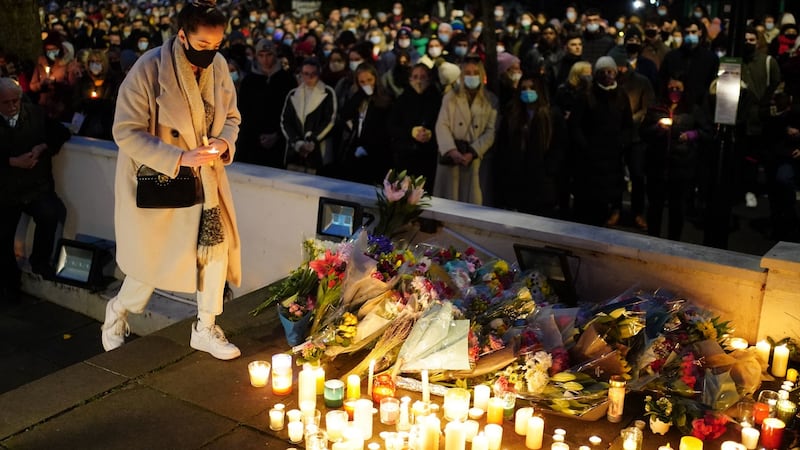At the end of the 1970s I watched a seemingly endless march go by in Dublin city centre, made up mostly of women, under the slogan “Reclaim the Night”.
The women were protesting against sexual violence, especially rape.
Almost a quarter of a century after that event, and a quarter of a century back from where we are now, The Irish Times reported that “carrying flags, candles and banners, several hundred women and men braved the freezing cold to support a ‘Reclaim the Night’ march in Dublin last night”.
Already this year the city, and the whole country, has seen protests at the killing of Ashling Murphy and at the prevalence of violence against women.
The 1970s march provided an impetus for the establishment of the Dublin Rape Crisis Centre. The reaction to the loss of Ashling Murphy was a dynamic leading to the promised establishment of a statutory agency to oversee the State's response to domestic, sexual and gender-based violence.

To me, the most significant part of the response to violence against women this year has been the increasing number of women who talk about their alertness to danger when they are in public spaces. This testimony drives home to men that the confident looking woman walking down the street may well be keeping an eye out for an attack. In a way we knew this, but it’s different when it’s said out loud and it’s not pleasant to hear.
I think this understanding can change how we see things, can change how we feel, and this, I hope, can lead to change in hearts and minds.
It is, I think, very troubling that research for Women’s Aid found that one fifth of young women had experienced abuse in an intimate relationship,
The most troubling aspect of it is that I have been reading the report of a 20 per cent rate of violence not for years but for decades.
On and on
So in spite of all we think we have learned in the meantime, it goes on and on.
What I found most startling in that research was that almost one third of young people didn’t think women were more likely than men to be victims of abuse. Yet while one in five young women reported that they had been abused, the reported occurrence among young men was much lower at one in eleven.
The young men are more likely to seek help. Among the young women, almost one in three told nobody and this was described by Sarah Benson of Women's Aid as "incredibly worrying."
Where is the hope? I think it lies in change over long periods of time. A hundred years ago, not much, if anything at all, was said about violence in the home
What does all this mean? To me, it means that the prevalence of violence towards women is remarkably resistant to change.
Where is the hope? I think it lies in change over long periods of time. A hundred years ago, not much, if anything at all, was said about violence in the home. And violence towards women in public spaces was little talked about compared to what we have seen this year.
Of course, we don’t really know what was the prevalence of domestic violence a century ago. But as it went unrecognised until about 50 years ago, and as marriage was an institution with no realistic escape, we are justified in assuming that it was higher then than now.
I remember around 1970 when a young local man was arrested for the killing of his father while defending his mother after years of abuse, hearing people say they had known what was going on and felt terribly guilty for not saying anything about it. I doubt if any effective intervention would have been possible at the time but I think of those voices as the cracking of an old wall of silence that had stood for all of history.
Today, I think the willingness of women to speak out about fear in their everyday lives marks another point of change. The pace of change is discouragingly slow but these women need to keep talking. And we men need to keep listening.
– Padraig O'Morain (Instagram,Twitter: @padraigomorain) is accredited by the Irish Association for Counselling and Psychotherapy. His books include Kindfulness – A Guide to Self Compassion; his daily mindfulness reminder is available free by email (pomorain@yahoo.com).










